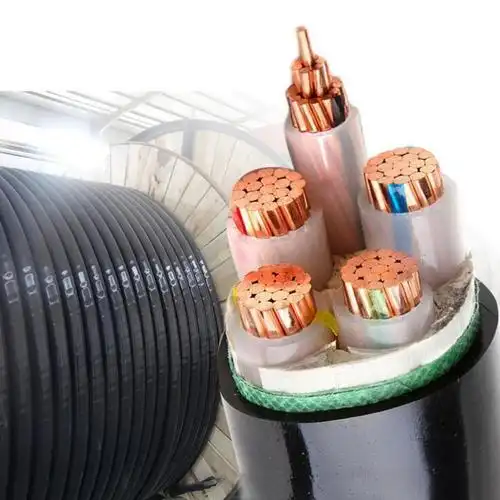In today’s fast-changing energy world, picking the right parts for your power projects is key. High-voltage transmission cables let us move electricity over long distances without losing much power, which makes the grid more reliable. This blog post walks you through why you need these cables, where to use them, and what to look for when you buy them.
High-Voltage Cables: What Makes Them Essential?
High-voltage transmission cables carry electricity at levels usually over 100 kilovolts (kV). They link power plants—like wind and solar— to substations and then to homes and businesses. Because these cables send power at high voltage, energy losses that happen when electricity travels long distances are kept to a minimum. This is why they are a must-have for a lean, efficient grid.
Key Benefits of High-Voltage Cables
1. Less Energy Wasted: The biggest benefit of a high-voltage cable is lower energy loss during the trip. Higher voltage means the cable carries smaller current. Since heat loss is related to current level, that smaller current means much less power wasted as heat. This is especially important when moving power from clean, renewable sources, where squeezing the most energy out of every electron counts.
2. Greater Dependability: High-voltage cables are built to handle extreme weather and everyday bumps. The sturdy layers and seals mean they last longer and don’t need as many repairs, keeping energy projects on track and on budget.
3. More Power Throughput: These cables push more energy than regular ones. That added capacity matters when a region is gulping down electricity or when it combines solar, wind, and hydro plants into one grid.
4. Design Versatility: Whether buried a few feet underground or strung from tall towers, these cables fit the layout a team envisions. The option to retrofit lets them integrate with old pole lines or alley footprints, keeping tree canopies and neighborhoods intact.
Things to Weigh When Picking High-Voltage Cables
- Right Voltage Level: The voltage rating must match what the grid intends to deliver. Get this mismatch wrong, and sparks or energy losses can race across the wire.
- Conductor Choice: Copper and aluminum top the list. Copper is the top conductor and shrinks conductor size, while aluminum is lighter and cheaper, making it a budget champ on longer routes.
- Insulation Type: The insulation you pick really impacts how well a cable works and how long it lasts. The top choices are XLPE (cross-linked polyethylene) and EPR (ethylene propylene rubber). Each has its strengths, so match the cable to the job.
- Environmental Considerations: Think about the surroundings where the cables will go. Things like heat, moisture, and chemical exposure all count. They can change what materials you use and how you design the cable.
Industry Trends and Future Outlook
As renewable energy continues to expand, efficient energy transmission is a must. The worldwide move to greener energy is sparking new high-voltage cable innovations. Engineers are creating smarter materials and designs to improve performance, cut ecological footprints, and boost overall efficiency. On top of that, smarter grid technology is allowing teams to track and manage high-voltage networks in real time, making the energy supply even more reliable.
High-voltage transmission cables are a must-have in today’s big energy plans. They carry lots of electricity far, far away and lose very little along the way, so energy companies rely on them. The energy field keeps changing, and knowing the newest cables and tools helps you choose the right plans. Tracking these shifts helps you keep your projects smart and efficient.

